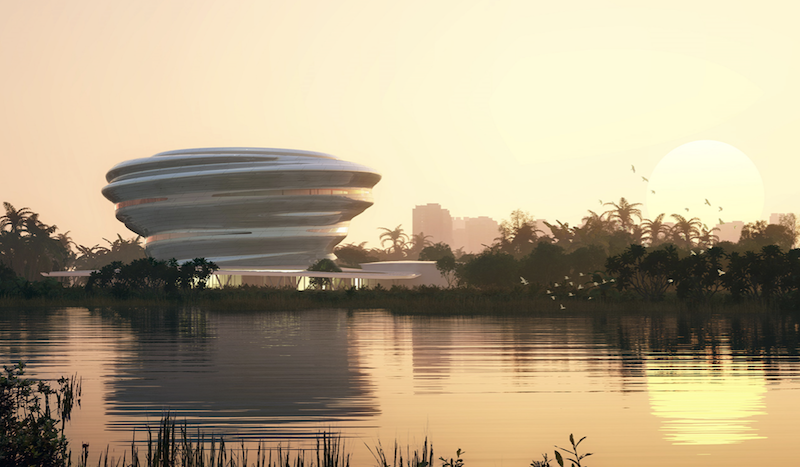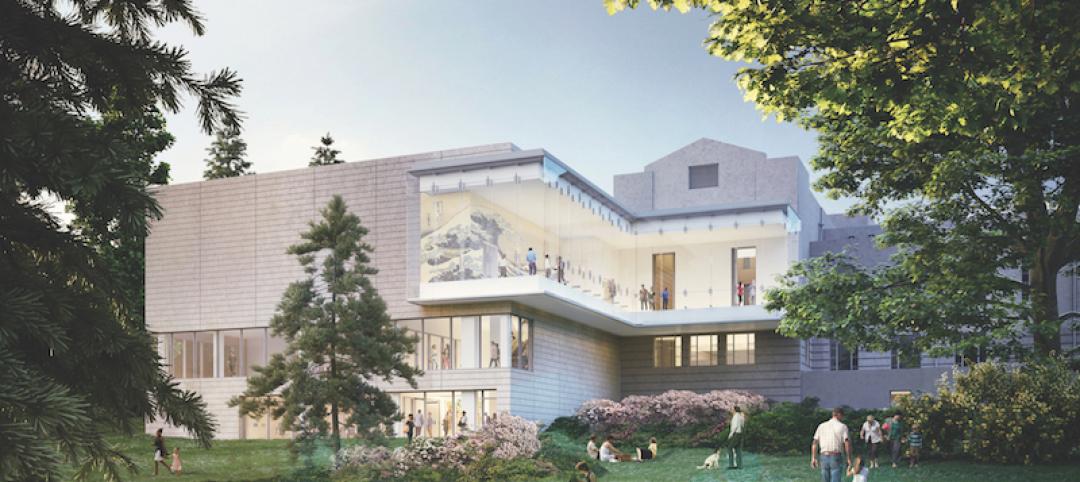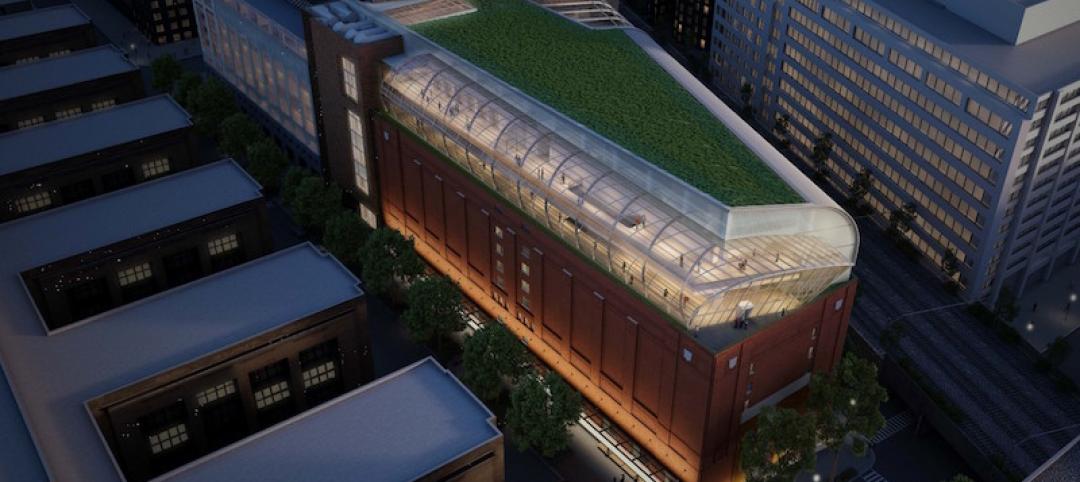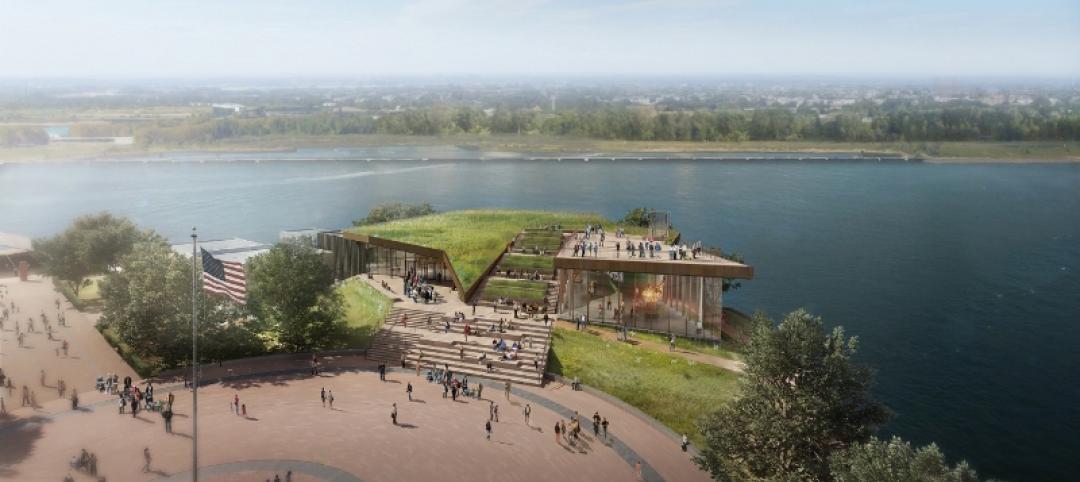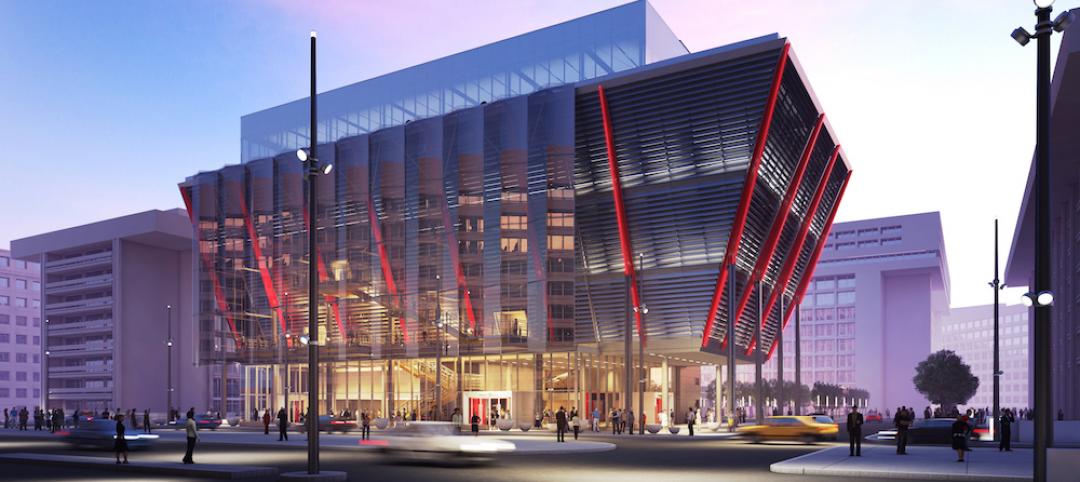MAD Architects has revealed the design for the Hainan Science and Technology Museum, located on Haikou’s west coast in Hainan province, shortly before the project is set to break ground at the end of August.
The 500,000-sf museum draws from the site’s dual urban and natural context, set against the backdrop of a tropical rainforest. The museum’s main pavilion is shaped like a cloud in dialogue with nature. From a distance, the building is designed to emerge from the city, while it will appear to visitors entering the museum area to be floating above the jungle.

About 299,000 sf of the museum’s total area is located above ground and includes permanent exhibition space, a planetarium, a giant-screen theater, and a flying theater. The museum’s interior structure comprises three floor-to-ceiling cores, curved trusses, spiral ramps, and a roof, that are all exposed to achieve harmony between the architectural forms and structural system. A skylight in the museum’s dome bathes the atrium in natural light while a sloping, spiraling exhibition space ascends from the central hall over five floors to connect visitors across the museum.
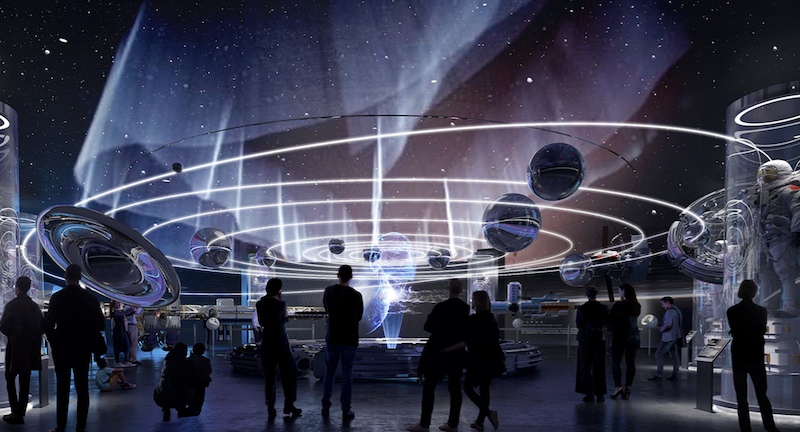
The exhibition experience begins on the fifth floor where the elevator opens to a 360-degree viewing platform with the sea and cityscape visible in the distance. Visitors on the top floor begin by exploring the technology and space galleries before proceeding down the ramp to the ocean and life science galleries on the fourth floor. The math and science galleries are on the third floor and the multimedia interactive experience area and the children’s playground are on the second floor. As visitors travel down the ramp, the can simultaneously enjoy the scenery and the exhibitions and a gallery running alongside the ramp extends the viewing experience.
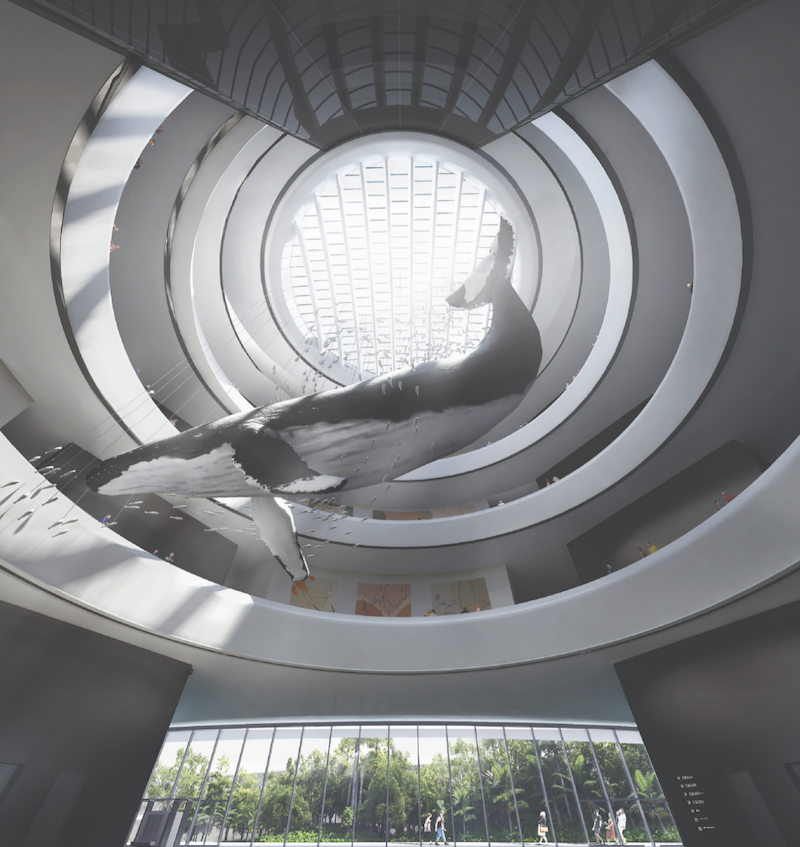
The museum’s facade of fiber-reinforced plastic gives the building a distinctive silver, reflective exterior from both near and far. An undulating canopy extends from the main pavilion in all directions to create a space specifically conceived to accommodate the public in Haikou’s humid and rainy climate. The north side of the canopy also hosts the giant screen and flying theater. The southwest corner hosts the planetarium and observatory. Outdoor public spaces include a crater-like sunken plaza and a reflecting pool.
The Hainan Science and Technology Museum is slated for completion in 2024.
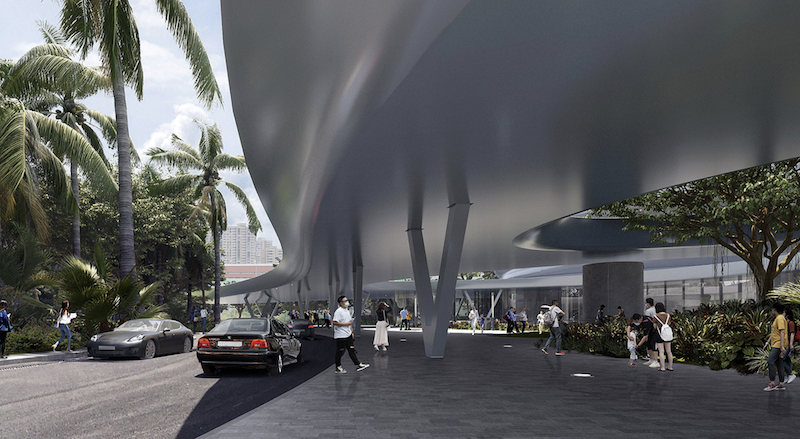

Related Stories
Museums | Nov 18, 2016
Plans for the expansion and renovation of the Asian Art Museum in Seattle unveiled
LMN Architects is the architect and interior designer for the Bebb and Gould-designed museum.
Museums | Nov 17, 2016
The Guggenheim Helsinki has one final chance to become a reality
The museum’s fate will be decided with a final vote on a new proposal.
Museums | Nov 8, 2016
Museum of the Bible to use technology to bring the Bible to life
The museum will be two blocks from the National Mall and three blocks from the Capitol.
Museums | Oct 11, 2016
Santiago Calatrava-designed Museum of Tomorrow awarded 'Best New Museum of the Year – Central/South America' by Leading Culture Destinations
The museum opened in 2015 in Rio de Janeiro’s Porto Maravilha
Museums | Oct 10, 2016
New, larger Statue of Liberty Museum being built on Liberty Island
The museum will look to complement the Statue of Liberty without drawing attention away from it
Museums | Sep 21, 2016
Design guidelines for museums, archives, and art storage facilities
Specialty Buildings Column Series, Part 2 of 6 [Click Here to Part 1]
Museums | Sep 19, 2016
Museums refine their mission in the digital age
Preserving history is still their core function, but museums are using fresh approaches to engage an easily distracted public.
Museums | Sep 14, 2016
Architectural model museum opens in Japan
The museum includes models from Japanese architects including Shingeru Ban, Kengo Kuma, and Riken Yamamoto.
Museums | Sep 14, 2016
Finnish government halts plans for Guggenheim Helsinki
Construction of the museum relied heavily on state funding, which has officially been denied.
Museums | Jun 17, 2016
Construction begins on new and expanded International Spy Museum in Washington D.C.
The building will have a glass veil that surrounds an enclosed black box, a setup that the museum hopes will add vibrancy to its new L’Enfant Plaza location.


